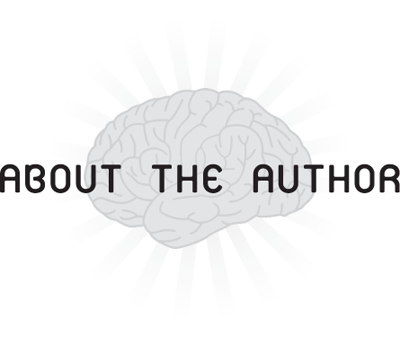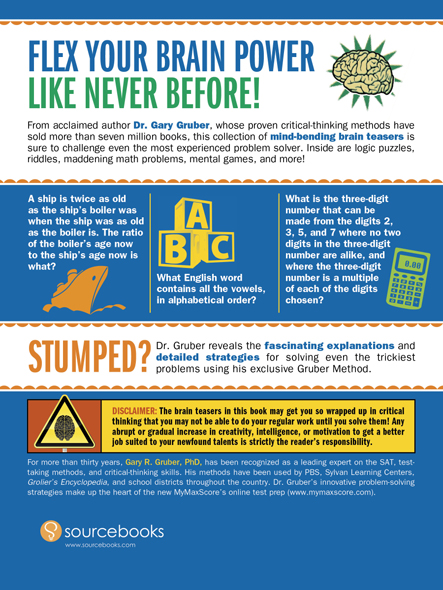World's 200 Hardest Brain Teasers (17 page)
Read World's 200 Hardest Brain Teasers Online
Authors: Dr. Gary R. Gruber

Solution
1. Draw EF parallel to BC. Then angle DFE = 80° because of equal corresponding angles of parallel lines.
2. Drop a perpendicular line to BC from A, hitting BC at G. Because of congruent triangles ABG and AGC, angle BAG = angle CAG = 10°.
3. Now draw line FC, calling H the point where line FC intersects line BE. Line AG passes through point H, because of symmetry.
4. Angle BHC = 60° since the other angles of the triangle BHC are both 60°.
5. BE = FC (because of corresponding sides of congruent triangles FBC and EBC). BH = HC (call BH b) because triangle BHC is isosceles. So by subtraction, FH = HE.
6. Since angle FHE = 60° (vertical angle to BHC), and because FH = HE from 5, angle FHE = angle HEF = 60°, so triangle FHE is equilateral. Thus, FE = FH = HE. Call each of those sides a.
7. Now AF = AE (because AB = AC and FB = EC, by subtraction AF = AE).
8. Because triangle AEB is isosceles, AE = BE =
b
+ a. Thus, AF = BE =
b
+
a
(since AF = AE from 7).
9. BE = FC (congruent triangles BEC and BFC), so AF = FC, since AF = BE from 8.
10. Now watch this: Triangle AFH is congruent to triangle CFD because AF = FC; angle AFH = 140° = angle CFD; angle DCF = 10° = angle FAH. Thus, corresponding sides of the congruent triangles AFH and triangle CFD are equal, so FH = FD. But FH = FE from 6, so FE = FD.
11. Since FE = FD, angle FDE = angle FED and since angle DFE = 80° from (1), angle FDE = 50° = angle FED.
12. But angle FDC = 30°, so by subtraction, angle EDC = 20°!

Gary R. Gruber, PhD, is recognized nationally as the leading expert on standardized tests and originator and developer of the critical-thinking skills necessary for use on standardized tests. It is said that no one in the nation is better at assessing the thinking patterns of how a person answers questions and providing the mechanism to improve the faulty thinking approaches. Dr. Gruber’s SAT score improvements with students have been documented to be the highest in the nation.
Dr. Gruber’s unique methods have been used by the Public Broadcasting Service (PBS), Sylvan Learning Centers, and
Grolier’s Encyclopedia,
and they are being used by school districts throughout the country, in homes and workplaces across the nation, and by a host of other entities. Most recently he has trained the University of California’s teachers to create programs for specific critical-thinking and problem-solving skills for their minority programs.
Dr. Gruber holds a doctorate in physics and has published more than thirty-five books with major publishers on test-taking and critical-thinking methods, with over seven million copies sold. He has also authored over one thousand articles in both scholarly journals as well as in newspapers syndicated nationally, has appeared on numerous television and radio shows, and has been interviewed in hundreds of publications. He has developed major programs for school districts and for city and state educational agencies for improving and restructuring curriculum, increasing learning ability and test scores, increasing motivation, developing a passion for learning and problem solving, and decreasing student dropout rates. His results have been lauded throughout the country by people from all walks of life.
His mission is to get the nation impassioned with learning and problem solving so that people don’t merely try to get a quick answer, but actually enjoy and look forward to solving the problem and learning. With this approach, Dr. Gruber believes that we’d have a nation of critical thinkers who would find problem solving enjoyable. Because of Dr. Gruber’s tenacity, passion, and creativity for solving problems, and having used the strategies he has developed and honed for years, the
Washington Post
has called him “the super genius.”

